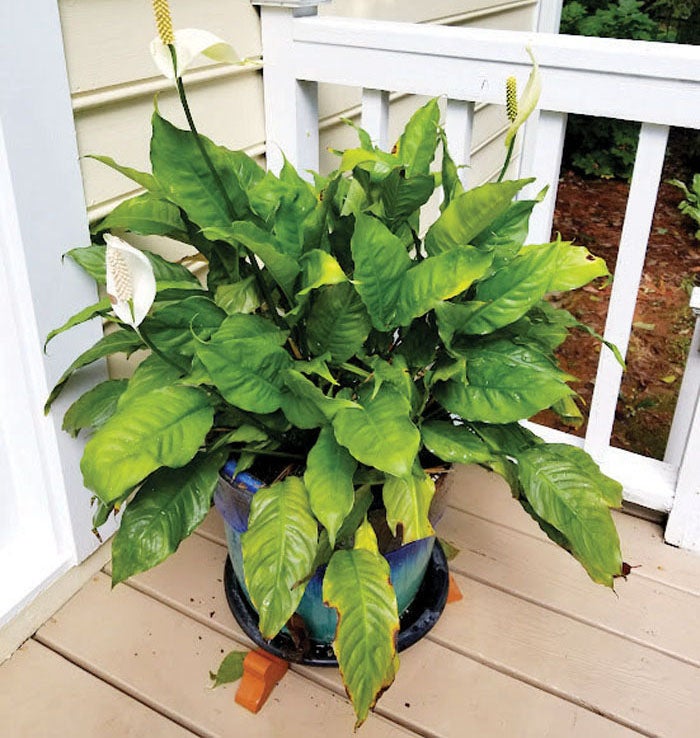Darrell Blackwelder: Bring in your houseplants
Published 12:00 am Saturday, October 8, 2022

- Peace lily
Cooler temperatures and falling leaves are a signal for those with houseplant outdoors to move them indoors. Temperatures dipping down into the 40-degree range often damages house plants.
Many house plants are tropical understory plants with more cell structures containing oils and waxes than endogenous plants. The cells solidify under cold night temperatures and rupture cell walls. For example, rubber tree plants are easily damaged at temperatures of 42 degrees.
The indoor environment is a difficult transition for most houseplants coming in from their long summer vacation. Outdoors, sunlight can be nearly 10,000-foot candles whereas indoors, light intensity drops dramatically to 15-foot candles, initiating premature leaf drop.
It is important to create an indoor environment similar to the outdoors. Move house plants to an area indoors that has high natural light. Avoid placing plants near drafty doors or forced air heating vents.
Occasionally mist house plants or group plants on pans of rock filled with water. Evaporating water increases the level of humidity around the plant. Implementing an electrostatic humidifier to the room is an excellent method of keeping the air moist.
House plants on outdoor vacation this past summer are also subjected to insect pests. Check house plant foliage and stems for aphids, scales or other insect pests carefully before bringing indoors.
Use recommended house plant sprays to control insect pests outdoors a few days before bringing them indoors for their winter rest. Eggs and immature stages of spiders, ants and other insects may be lying dormant in the soil media of the house plant. Pots need to be drenched 3 days before moving indoors with an indoor insecticide. Drenches control many insects hibernating in the soil. Always read and follow pesticide labels before applying any pesticide.
Fertilization is not recommended on house plants during the winter months as soluble salt buildup from winter fertilization burns the roots, reducing vigor and eventually kills the house plant.
Darrell Blackwelder is the retired horticulture agent and director with the North Carolina Cooperative Extension Service in Rowan County. Contact him at deblackw@ncsu.edu.



